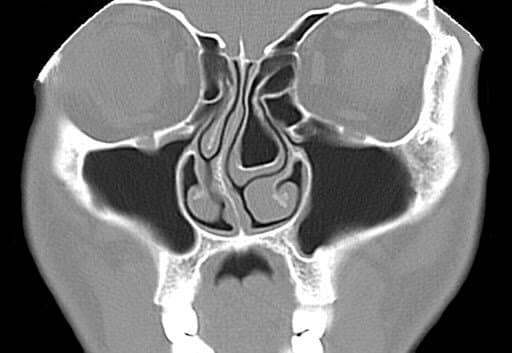Sinus Infection vs Cold: How to Tell the Difference
If you’re coughing, experiencing nasal congestion, or feeling sinus pressure, you might wonder: is this a sinus infection or just a common cold? Both sinus infections (sinusitis) and colds share many similar symptoms, which can make it tricky to tell them apart early on. However, understanding the difference between sinus infection vs cold is important for managing your symptoms correctly, seeking the right treatment, and recovering more quickly. In this article, we’ll help you distinguish these two conditions using reliable insights from sources like Anne Arundel ENT, Harvard Health Publishing, and the Cleveland Clinic.[1][2][3]
Symptom Comparison Chart: Sinus Infection vs Cold
Many people first notice symptoms such as a stuffy or runny nose, sore throat, or fatigue with both conditions. But looking closely at how symptoms develop, their severity, and how long they last can help you tell the difference. Below is an easy-to-understand summary.
Key Symptoms of a Cold
- Nasal Discharge: Usually clear and watery — imagine a gentle stream flowing freely.
- Additional Symptoms: Sneezing, sore throat, mild fatigue, sometimes a mild headache.
- Fever: Rare, though mild fever can occasionally occur, especially in children.
- Symptom Duration: Most people feel better within 7–10 days.
- Pain/Pressure: Usually none or mild; facial discomfort is uncommon.
A cold generally starts gradually, often with a scratchy or sore throat, followed by a runny nose within a day or two. Sneezing and coughing may develop. Symptoms typically peak around day three or four, then slowly improve, with most people back to normal by the end of the week.
Key Symptoms of a Sinus Infection
- Nasal Discharge: Thick, yellow or green mucus that lingers — more like a slow, sticky drain clog.
- Facial Pain/Pressure: Noticeable discomfort or tenderness around the nose, cheeks, eyes, or forehead.
- Fever: Can occur, often higher with bacterial sinus infections but sometimes mild in viral sinusitis.
- Symptom Duration: Symptoms last 10 days or more, or may worsen after an initial improvement.
- Other Symptoms: Bad breath, reduced sense of smell or taste, moderate to severe fatigue.
Sinus infections cause mucus to thicken and change color. Many patients describe pressure building up in their face, especially when bending forward or lying down. Unlike a common cold, these symptoms tend to last longer and often worsen without treatment.
Side-by-Side Symptom Chart
Symptom Common Cold Sinus Infection Nasal Discharge Clear, watery Thick, yellow or green Sneezing Common Possible, less common Sore Throat Common Sometimes Facial Pain/Pressure Rare Common (nose, cheeks, eyes) Fever Rare (mild, brief) Can occur; often higher in bacterial sinusitis, sometimes mild in viral cases Duration 7–10 days 10+ days or worsens Fatigue Mild Moderate to severe
Duration Differences: How Long Do Symptoms Last?
A key difference between sinus infections and colds is the length of symptoms. Paying attention to timing can help you decide whether to treat symptoms at home or seek professional care.
Typical Cold Duration
Colds usually develop gradually after exposure to someone with a cold. Symptoms peak within two to three days—runny nose, mild cough, fatigue—and then fade. Most people feel much better by day seven and recover fully by day ten. In total, colds typically resolve on their own within 7–10 days. Sudden worsening or complications warrant medical attention.[1][2]
Sinus Infection Duration
Sinus infections often last longer than colds. Watch for these signs:
- Symptoms persist beyond 10 days, especially facial pain or pressure.
- Symptoms improve at first but then worsen again (a “double worsening” pattern).
This pattern suggests sinusitis, especially if accompanied by thick nasal discharge and fever. Many patients feel stuck with symptoms that won’t clear. If this sounds familiar, it’s important to consult a healthcare provider for diagnosis and treatment.[2][3]
Causes Explained: Why Do They Occur?
Though both affect your respiratory system, sinus infections and colds arise from different causes, affecting treatment approaches.
Causes of the Common Cold
- Origins: Mainly viruses, especially rhinoviruses.
- Transmission: Spread by airborne droplets from coughs or sneezes and contaminated surfaces.
- Risk Factors: Seasons (fall and winter), crowded places, close contact with sick people.
Because colds are viral, antibiotics are not effective and should be avoided.
Causes of Sinus Infection (Sinusitis)
- Origins: Often follow a viral cold but can be caused by bacterial infections or triggered by allergies.
- Mechanism: Inflamed mucous membranes block sinus drainage, trapping mucus where germs multiply.
- Risk Factors: Recent cold, allergies, nasal polyps, or nasal structural issues.
Treatment depends on whether sinusitis is viral or bacterial. Viral cases focus on symptom relief, while bacterial cases may require antibiotics. Identifying the cause is key for proper care.[2][3]
Effective Treatment Options: Sinus Infection vs Cold
Knowing your condition helps guide treatment and decide when to see a healthcare provider.
Treatment for the Common Cold
- Symptom Relief: Rest, hydration, use a humidifier, and try over-the-counter decongestants, pain relievers, or throat lozenges.
- Medications: Antibiotics are not needed since colds are viral.
- Prevention: Frequent hand washing, avoid touching your face, and limit contact with sick individuals.
Treatment for Sinus Infection
Supportive Care (for viral or bacterial sinus infections):
- Rest and drink plenty of fluids
- Nasal saline rinses or sprays to relieve congestion and thin mucus
- Steam inhalation to loosen sinus secretions
- Over-the-counter pain relievers (acetaminophen, ibuprofen) to ease pain and fever
- Corticosteroid nasal sprays, prescribed by your doctor, to reduce inflammation
When Antibiotics Are Considered:
- Typically reserved for bacterial sinusitis lasting longer than 10 days, severe cases, or worsening symptoms after initial improvement.
- A healthcare provider will determine the need for antibiotics based on symptoms and possibly additional tests.[3]
When to See a Doctor:
- High fever, confusion, or severe headache
- Eye swelling, vision changes, or persistent vomiting
- Symptoms that don’t improve or worsen after 10 days
Lifestyle Tips for Prevention and Relief:
- Use a humidifier in dry environments
- Practice good hand hygiene
- Manage allergies effectively with medication and avoidance strategies
- Avoid exposure to cigarette smoke and other pollutants[1]
FAQs: Common Questions About Sinus Infection vs Cold
Can a sinus infection develop from a cold?
Yes. Sinus infections often develop after a cold when inflamed nasal tissues and blockages trap mucus, creating an environment for bacterial growth.[2]
When should I see a doctor for sinus symptoms?
Seek medical attention if symptoms last more than 10 days, worsen after initial improvement, or include severe facial pain, swelling around the eyes, vision changes, or a high fever.
Are fevers common with colds?
Fevers are uncommon in adults with colds but may occur in children. Persistent or high fever may indicate a sinus infection or another illness.
How can I relieve facial pain or pressure at home?
Warm compresses on the face, steam inhalation, nasal saline rinses, and over-the-counter pain medications can help ease discomfort.
Is green nasal discharge always a sign of infection?
Not necessarily. Thick yellow or green mucus can occur with both sinus infections and prolonged colds. Mucus color alone doesn’t definitively indicate bacterial infection—duration and other symptoms like facial pain and fever are better clues.[1]
Conclusion
Knowing the difference between a sinus infection and a cold improves how you manage symptoms and when to seek medical care. Both often begin with nasal congestion, cough, and fatigue, but key differences guide treatment:
- Colds: Characterized by clear nasal discharge, little or no facial pain or fever, and symptoms that improve within 7–10 days.
- Sinus Infections: Marked by thick, discolored mucus, notable facial pain or pressure, symptoms lasting longer than 10 days or worsening, and sometimes fever.
Recognizing these signs helps you get appropriate care sooner and find relief faster. If you’re unsure about your symptoms or they persist or worsen, tracking their duration and severity will assist your healthcare provider in diagnosis and treatment.
If you suspect a sinus infection or need personalized advice for ongoing symptoms, book an appointment with a trusted ENT specialist or primary care provider for tailored care.
References
- Anne Arundel ENT. The Common Cold vs Sinus Infections: How to Tell the Difference
- Harvard Health Publishing. Is That Winter Sniffle a Cold or a Sinus Infection?
- Cleveland Clinic. Sinus Infection
Looking to learn more about respiratory infections or strategies to boost your health? Explore our other resources on colds, sinusitis, and staying well throughout the year.
Disclaimer: This article is for educational purposes only and is not medical advice. Please consult a qualified healthcare provider for diagnosis and treatment.
Don’t let allergies slow you down. Schedule a comprehensive ENT and allergy evaluation at Sleep and Sinus Centers of Georgia. We’re here to find your triggers and guide you toward lasting relief.





